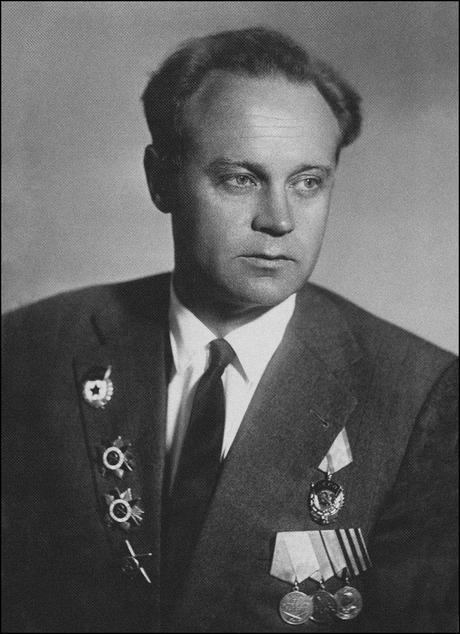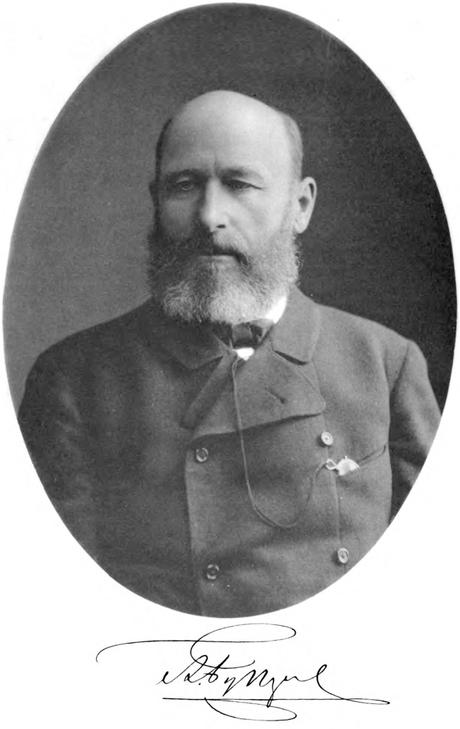 O.A. Reutov
O.A. Reutov[Part 4 of 7]
In late 1940s and early 1950s, the culture of Soviet science was dominated by Lysenkoist thinking, with little room permitted for other points of view. Indeed, any work that did not fall strictly in line with Lysenkoist ideology was condemned, and those scientists who were brave enough to uphold contrary beliefs were routinely imprisoned or even killed. This period, which coincided with the end of Joseph Stalin’s reign as premier, was clearly not an environment that encouraged innovation; rather, conformity ruled the day.
By extension, the most lauded Soviet scientists of the era were those who remained ideologically attuned to accepted beliefs, and it was in this environment that pitched opposition to Linus Pauling’s resonance theory emerged. The controversy then, was not so much one based on scientific opposition, but was instead steeped in perceived ideological differences.
As noted in our previous post, Ia. K. Syrkin and M.E. Diatkina’s books – including their translation of The Nature of the Chemical Bond – did much to increase awareness of resonance theory within the Soviet scientific community, and in due course the theory was attacked. In 1949 V.M. Tatevskii and M.I. Shakhparanov became the first authors to criticize the theory in the Soviet literature, and seven more articles followed from there. Much of this work received the formal backing of the Soviet state, and all were approved for publication by the Scientific Council of the Institute of Organic Chemistry of the Academy of Sciences.
Reviewing these articles today, it would appear that more than four hundred Soviet scientists were working in some way to disprove resonance theory within the Soviet Union. The sentiment that emerged from this work held that Pauling’s resonance theory was scientifically unsound because 1) it was not ideologically congruent with Soviet ideology, and 2) it did not recognize the work of previous Soviet or Russian scientists.
The framework established by the seven articles set the stage for the next chapter in the controversy: the approval of an official stance on resonance by the Soviet government.
As part of the tradition of Lysenkoist thinking, Soviet scientists periodically held conferences where theoretical doctrine was debated and a specific piece of ideology was declared the “winner.” These winning ideas would, in turn, become the Soviet government’s supported theory, at which point no other competing theory would be allowed.
In 1951 it was resonance theory’s turn to be debated and, to the surprise of few, it was ultimately decided that Pauling’s ideas were not to be considered as part of the Soviet doctrine surrounding the structure of molecules. Furthermore, according to a U.S. State Department document, a decree was issued that “all remnants of the mistaken conceptions of resonance” were to be eradicated.
The official Soviet position on resonance theory was disseminated in an article by O.A. Reutov in the Journal of General Chemistry of the USSR and titled, “Some Problems of the Theory of Organic Chemistry.” In it, Reutov systematically attacked Pauling’s ideas as “bourgeois science” and “alien reactionary ideas” that did not take into account Soviet foundational work on molecules.

According to Reutov, Russian scientist Aleksandr Mikhailovich Butlerov had developed the “true” chemical structure of the molecule, and he argued that Pauling evinced an “insufficient appreciation as well as an incomplete understanding and a perversion of the Butlerov theory of structure.” Pauling’s omissions were so egregious as to force Reutov to conclude that the theory of resonance had been formulated, at least in part, for “the belittlement of the importance of Russian science.”
Reutov’s rhetoric only escalated from there. “[I]t is urgently necessary,” he wrote, to criticize resonance on the “basis of Marxist-Leninist methodology,” a passage that all but admits that the controversy had little to do with scientific thinking. And this needed criticism would reliably be carried out by Soviet organic chemists who, to use Reutov’s words, “form an army of many thousands strong.” By the end of the article, it was clear: the Soviet scientific community was ready to attack western ideas on the chemical bond, and Pauling was their primary target.
Because Reutov’s article was originally published in Russian and chiefly circulated within the Eastern Bloc, Pauling did not find out about it for several months. In August 1951 he finally received a copy from the Consultants Bureau, a translation center specializing in scientific journal articles and based in New York. Pauling was understandably unhappy with the content and tone of the article, and expressed hope that “some action can be taken to stop this attack,” which to him was a “very vigorous one.”
